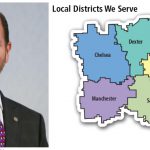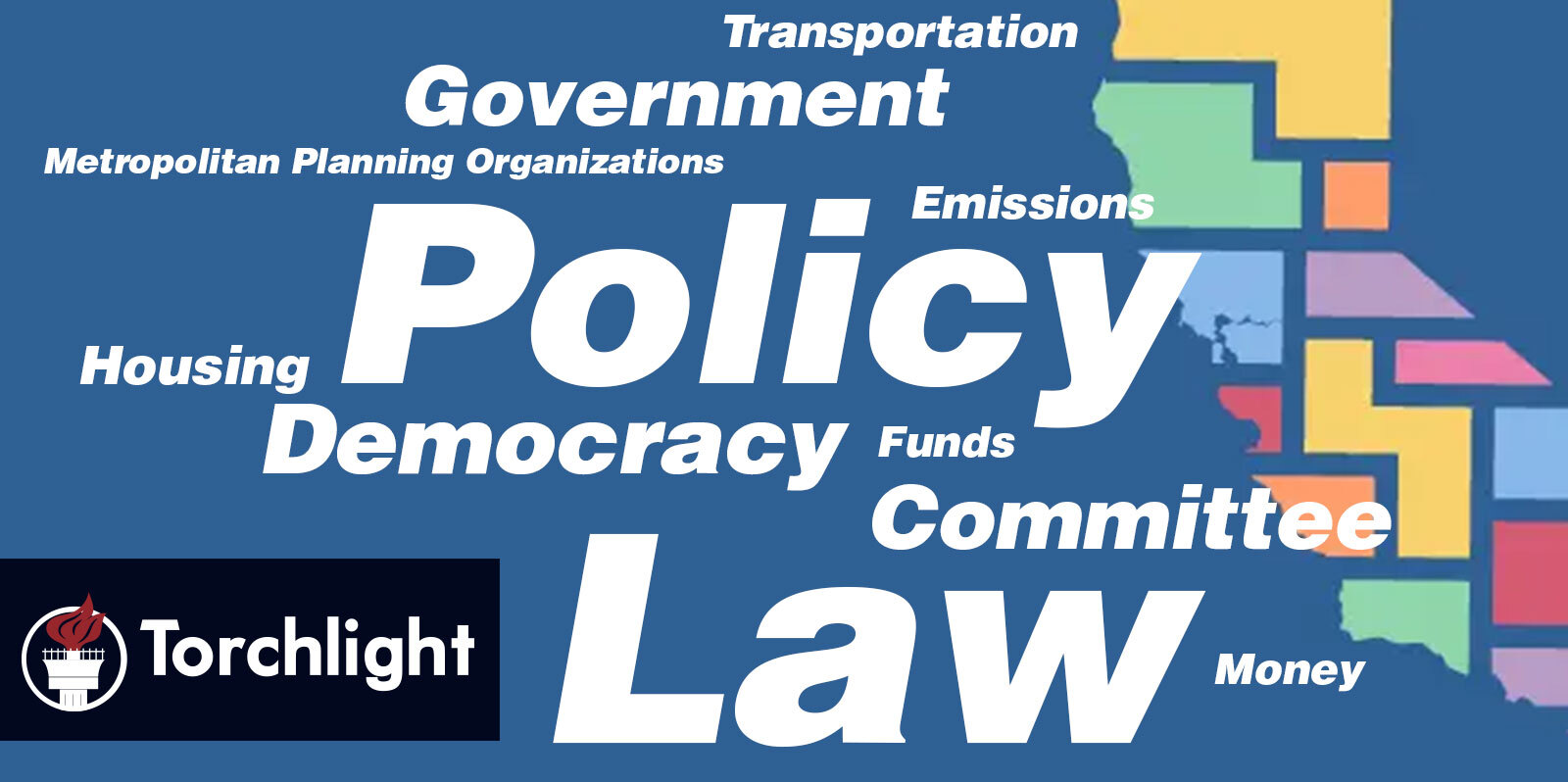Were I to ask you, the reader, where political decisions get made, your mind immediately conjures up images of smoke-filled back rooms. The more experienced among you may have participated in contentious party meetings or commented in equally contentious city council meetings. Political influence often gets peddled in the meeting halls of civic organizations like the Kiwanis, Rotary, or Elks clubs. In truth, such decisions are made anywhere well connected people gather. Policy is another matter entirely. Politics is the process by which policy gets made, and policy often sets the rules by which we live our lives. Policy has a vague definition, but one can think of it as the rational guidelines and rules used to make administrative decisions. The broad frameworks are determined by the politicians whose faces you see on TV or whose names you read on yard signs. Policy, the nit-picking details, is the reserve of the proverbial faceless bureaucrat. You find these characters at all levels of government from your city on up to the federal agencies of the national government. City Hall, County Seat, State Capitol, Washington DC. These are all covered to varying degrees by journalists and most people at least know of these places. However, there are many governance structures that you only tend to learn about if you pursue a degree in Public Policy, Public Administration, or, more rarely, when you take on a particular issue as a cause. These include Special Districts and Metropolitan Planning Organizations. States create and supervise Special Districts to govern spaces that don’t quite fit into the mold of a city, township, county, or, even an unincorporated area. For example, in the state of California, most harbors and graveyards are governed by their own special districts. However, this article will focus on Metropolitan Planning Organizations.
All national policies, one way or another, get carried out locally. This is especially true of transportation policy. Federal Highway funds and other spending, while directed from DC, are planned and spent at far more local areas. The bodies which do this planning are Metropolitan Planning Organizations (MPOs). The US Department of Transportation allocates funding in geographic units called Transportation Management Areas which consist of areas with 200,000 or more people. Thus, any MPO representing one of the large urban areas has a lot more clout in distributing federal funds. State governors, working with counties and municipalities decide the boundaries and constituent local governments. These organizations often go by the label of associations of governments or councils of governments. Reflecting the fact, these organizations may take on other duties. In fact, associations of governments wield considerable power at the local level in many areas such as housing, environmental policy, and sustainability. The associations carry an extremely heavy cudgel in the form of the ability to either withhold or grant transportation dollars to city governments based on whether they comply with rules and take part in planning programs. Often these rules and programs have little to do with highway funding in and of themselves.
One example of this comes from the Southern California Association of Governments (SCAG) in the form of its Sustainable Communities plan. Nominally, this is a transportation plan. However, the plan reaches far beyond policy issues related to moving people and goods around in Southern California. The Sustainable Communities Regional Transportation Plan aims to drastically reduce the emissions of LA County, not merely by changing the way people get around, but by encouraging changes in the way they live. This is not some sort of Agenda 21 conspiracy theory in which faceless bureaucrats use climate change to yank away the rights of honest citizens. Rather the plan is a sober eyed look at the sustainability challenges facing California and an earnest program to begin dealing with them by cutting emissions, mitigating impacts, and building resiliency. The plan also acknowledges the uncomfortable fact the median age of LA County and other Southern Californian communities keeps going up. So the Sustainable Communities plan calls for sizable investments in transit and curtailing sprawl in favor of urban infill development and denser housing.
More recently, SCAG became embroiled in the statewide debate over zoning reform to promote denser housing. Under state law associations like SCAG are the designated contractors who carry out the Regional Housing Needs Assessments. Following a contentious debate among the member governments, SCAG mandated that each member city and county government develop a housing elemetnt in its plan which would effectively up-zone parcels to permit more duplexes and other multifamily dwellings. In the City of Los Angeles this will take the form of increasing the number of units permissible on certain properties while lifting the height limits of residential buildings along arterial streets. These plans will dramatically change the city skyline and the way it uses land. In many communities these housing elements face argent opposition. However, at the end of the day, SCAG will decide how both federal and state funds are distributed in its region.
I recently worked with another association in Central California, AMBAG or Area of Monterey Bay Association of Governments, on a resiliency project. This project involved the adaptation of transportation infrastructure to sea level rise. I worked on estimating some of the economic impacts of the project and its policy options. This work gave me an inside eye into the workings of some of the most powerful yet obscure local government organizations. My experience working with the organization was genuinely positive. All the people involved were earnest and committed professionals struggling with the Wicked Problems that dominate the work of modern governance. Wicked Problems are a class of policy problems that have no clear stopping rule, many stakeholders, and tend to spawn further problems. Climate Change is a prime example of this sort of problem. In these meetings, the future we will live in was being designed. That prompts the question of just who is designing that future.
The public does not have direct representation on these associations. Rather, local elected leaders choose representatives to the governing board to oversee that activity of these associations of governments. The boards meet regularly, usually every quarter for full board meetings. Meanwhile, each association will have numerous committees which oversee and manage specific activities. Though federally mandated and independent of local governments MPOs and Associations of Governments become thoroughly enmeshed into regional and local politics. In theory, most MPOs follow the principle of one person, one vote. However, that rule applies to their boards which usually have one representative per member jurisdiction. This often leads to a malapportionment of representation which favors suburban communities while disenfranchising core urban populations. This tends to create policies which favor the mostly white populations around fringes of a metropolitan area while leaving out communities of color. This fact also leads many MPOs to enact transportation and land use plans which favor automobiles over transit and sprawl over transit oriented development.
However, some states and some MPOs on their own initiative have begun to revise their governance structures using weighted representation models. The governing structure of my local MPO, SCAG, differs from the one jurisdiction, one vote model. SCAG divides its region up into sixty seven districts of more or less equal population comprising at least one city. The largest cities in the region, Los Angeles and Long Beach each have an additional representative. Mayors of each member government designate a delegate, and often the mayor of larger cities will themselves be a delegate. Member counties are usually represented by the chair of the board of supervisors. Underneath the boards and committees of delegate one finds the professional staffers of the organization. For the most part, the associations employ planners along with small numbers of economists, policy analysts, and professionals in community engagement. These professional technocrats do the work of developing and executing plans along with the critically important task of engaging the public in both specifying and approving the plans. No association that I’ve worked with moves without first getting a great deal of buy-in from the publics they represent. So, while associations of governments are not representative, they function in the spirit of democracy.
This election year we are so very focused on the national presidential race and the races for the senate that we might not pay attention to our local elections. The power of Metropolitan Planning Organizations and Associations of Governments should provide us all a powerful reminder to examine local races and to participate in local governments. These organizations are the bridge between Washington and our hometowns. They likewise serve as the direct link between state capitols and local governments. MPOs can enact neither laws nor regulations, and lack enforcement powers to boot. They nonetheless have the means to set rules and force compliance. They do this by allocating both federal and state funds through transportation and land use plans. Your vote in local elections determines not only who holds the mayor’s office and sits in city council, but it also decides who will sit on regional governing boards in your regional MPO. Moreover, the cycle of city elections tends to be offset from federal elections, giving you additional chances to decide who makes the rules in your life. And, many of the local elections which determine the makeup of MPO boards take place every other year. Such elections tend to have much lower turnouts, so voting in them gives you a great deal of influence over your local and regional governments which make most of the rules you have to live with and implement federal policies on the ground.
Voting is not the only avenue available to influence decisions in an MPO. The professionals who staff these organizations are required to conduct extensive stakeholder engagement during the comment period for projects and plans. Both professional planners and appointed board members take this process very seriously as it gives them an indication of public opinion and engagement, both of which can predict election outcomes. Beyond that, MPOs can only respond to those they hear from. So, look into your regional Metropolitan Planning Organization, Association of Governments, or Council of Governments and see what they’re up to. Going to public meetings and responding to requests for comments can dramatically amplify your voice and alter the direction of local governance.


